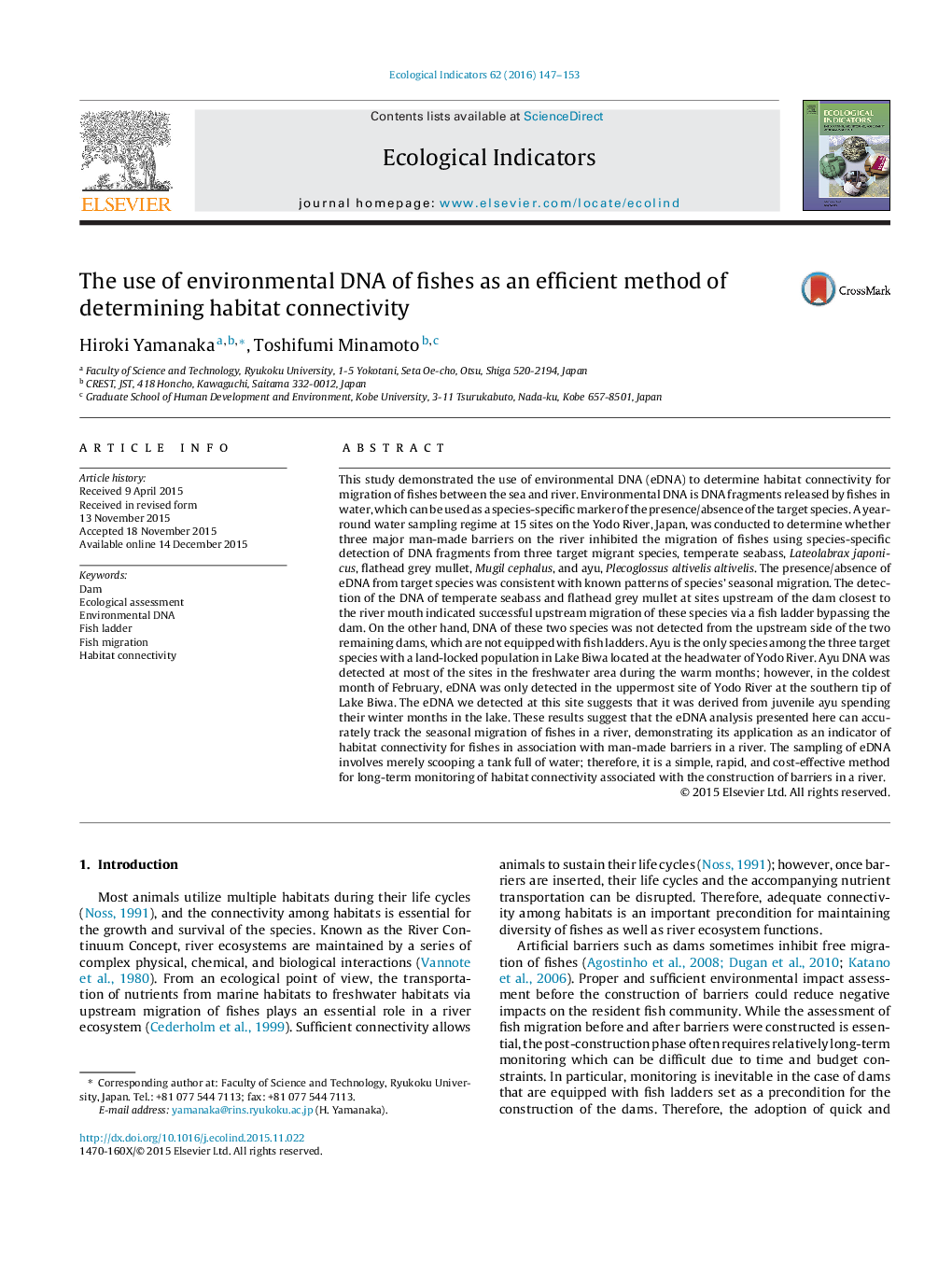| Article ID | Journal | Published Year | Pages | File Type |
|---|---|---|---|---|
| 6293936 | Ecological Indicators | 2016 | 7 Pages |
This study demonstrated the use of environmental DNA (eDNA) to determine habitat connectivity for migration of fishes between the sea and river. Environmental DNA is DNA fragments released by fishes in water, which can be used as a species-specific marker of the presence/absence of the target species. A year-round water sampling regime at 15 sites on the Yodo River, Japan, was conducted to determine whether three major man-made barriers on the river inhibited the migration of fishes using species-specific detection of DNA fragments from three target migrant species, temperate seabass, Lateolabrax japonicus, flathead grey mullet, Mugil cephalus, and ayu, Plecoglossus altivelis altivelis. The presence/absence of eDNA from target species was consistent with known patterns of species' seasonal migration. The detection of the DNA of temperate seabass and flathead grey mullet at sites upstream of the dam closest to the river mouth indicated successful upstream migration of these species via a fish ladder bypassing the dam. On the other hand, DNA of these two species was not detected from the upstream side of the two remaining dams, which are not equipped with fish ladders. Ayu is the only species among the three target species with a land-locked population in Lake Biwa located at the headwater of Yodo River. Ayu DNA was detected at most of the sites in the freshwater area during the warm months; however, in the coldest month of February, eDNA was only detected in the uppermost site of Yodo River at the southern tip of Lake Biwa. The eDNA we detected at this site suggests that it was derived from juvenile ayu spending their winter months in the lake. These results suggest that the eDNA analysis presented here can accurately track the seasonal migration of fishes in a river, demonstrating its application as an indicator of habitat connectivity for fishes in association with man-made barriers in a river. The sampling of eDNA involves merely scooping a tank full of water; therefore, it is a simple, rapid, and cost-effective method for long-term monitoring of habitat connectivity associated with the construction of barriers in a river.
